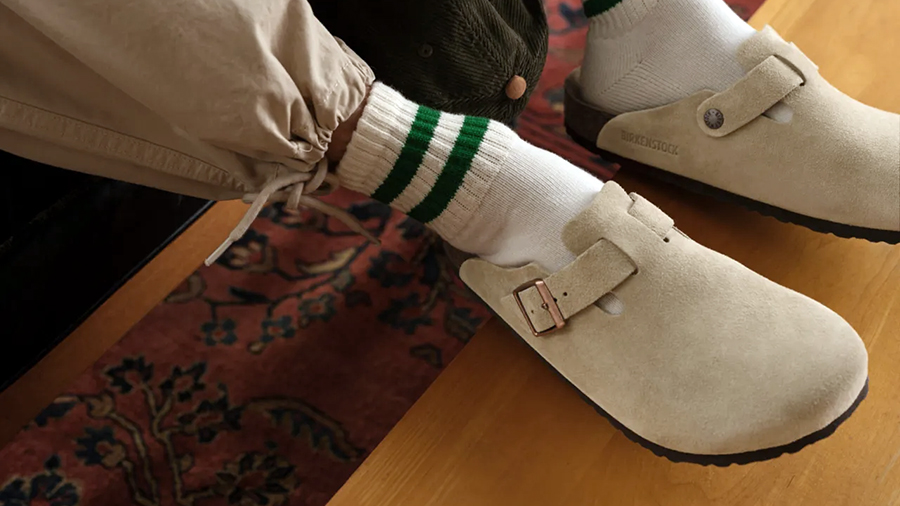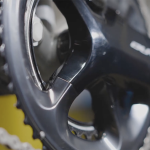Birkenstock Holding plc reported fiscal third-quarter revenue of €564.8 million for the period ended June 30, an increase of 19 percent year-over-year (y/y), but reportedly came up short of Wall Street’s consensus estimates. The company reportedly attributed the increase to “continued strong and growing consumer demand for its products across all segments, channels and categories.” Revenue growth also reportedly benefited from increased sales of closed-toe styles, which grew at over twice the brand’s average. Closed-toe shoe penetration increased by 400 basis points y/y.
Strong consumer demand, supported by new production capacity and category expansion, reportedly drove top-line growth. The company measured constant-currency (cc) growth at 19 percent for the period, which was below 20 percent for the first quarter since its IPO. Some analysts attributed the miss to lower than expected sales in the Americas.
Wall Street’s consensus estimates for the quarter included a 20 percent increase in sales and €0.51 in earnings per share (EPS) for the period. Birkenstock delivered neither benchmark. Some analysts were also expecting an increase in the EBITDA outlook that did not come.
With Birkenstock maintaining its revenue outlook at 20 percent growth for the year, the company must be expecting sales growth to moderate further in Q4 if the Q3 year-to-date growth is already at 22 percent in constant-currency terms.
Despite claims by Birkenstock Group CEO Oliver Reichert that Birkenstock is a “Superbrand” gaining the attention of key retail partners and their consumers, who are becoming increasingly selective and more intentional in their spending, shares have trailed other stocks with brands that are making waves and taking market share these days. Birkenstock is up 26 percent (before this report) this year, while Deckers Outdoor Corp., parent of hot brand Hoka, has climbed 42 percent, and On Holding AG has surged 76 percent for the year. To be fair, Birkenstock is outpacing Adidas, which is taking Nike share, but only boasting a 23 percent increase in share price year-to-date.
Bloomberg wrote recently that more selling of shares by firm L Catterton, which still owns over 60 percent of Birkenstock’s shares outstanding, could hurt the stock. The company and a group of the company’s employees raised $756 million in a share sale in June.
BIRK shares were down more than 13 percent in pre-market trading on Thursday, August 29 and closed down more than 16 percent for the day.
The company measured its nine-month year-to-date growth at 22 percent on a constant-currency basis and 19 percent on a reported (euro terms) basis. Birkenstock reports in euro (€) terms.
During the fiscal third quarter, Birkenstock said it saw strong growth across all segments and channels and continued to benefit from significant geographic expansion, increased usage occasions and distribution white space.
Wholesale (B2B) revenue grew 23 percent y/y to €340.6 million for the fiscal third quarter as demand, supported by strong sell-through, reportedly remains “very high.”
“Over 90 percent of B2B growth came from within existing doors as key retail partners continue to expand the breadth and depth of their Birkenstock offerings to meet growing consumer demand,” the company explained in a media release.
Direct-to-consumer (DTC) revenue grew 14 percent cc to 223.4 million in Q3 2024 against a strong fiscal third quarter 2023, which grew 26 percent from the prior-year Q3 period, which resulted in a DTC penetration rate of 40 percent of total sales.
The company opened seven new stores in the quarter, bringing the total number of retail stores owned to 64 doors.
Birkenstock said it saw broad-based double-digit revenue growth across all segments and channels
In the Americas, the company said strong consumer demand for the brand continued to drive record sales in the fiscal third quarter. Constant-currency revenue growth of 15 percent to €282.9 million in the quarter was supported by continued growth in B2B and DTC channels.
B2B growth in the region was reportedly driven by over 25 percent growth in key department store partners. Many of these partners drove brand exposure with 250th-anniversary in-store highlight executions and allocated increased space in support of the initiatives.
In Europe, Birkenstock said it continues to see market-leading growth and share gains across the region. Revenue in Europe grew 19 percent cc to €217.4 million, driven by demand in B2B and DTC channels.
“Better alignment with key retail partners led to increased orders and better sell-through performance throughout the region, with particular strength in France and Benelux, where distributor partners were recently phased out and replaced by healthy direct distribution,” the company said.
In the APMA region, Birkenstock reportedly achieved revenue growth of 41 percent cc to €63.7 million for the fiscal third quarter. The spike in growth is due to strong, emergent consumer demand throughout the region.
The company said it opened four new owned stores in the region in Q3, including three in India and one in Japan, bringing the total in the APMA region to 23 doors. Additionally, the company added ten new mono-brand partner stores.
Income Statement Summary
Gross profit margin was 59.5 percent of sales in the quarter, down 220 basis points from 61.7 percent in the year-ago quarter, reportedly due to the temporary impact of production capacity expansion combined with the increase in B2B share compared to a year ago.
Operating profit was €155.5 million in the quarter, compared to €118.0 million in fiscal Q3 2023.
Birkenstock Holding plc reported net profit of €74.6 million, or €0.40 per share, in Q3, up 18 percent y/y from €63.1 million, or €0.35 per share, in the fiscal 2023 Q3 period. EPS growth was 15 percent year-over-year.
Adjusted net profit amounted to €92 million for the Q3 period, up 14 percent y/y, with adjusted EPS of €0.49, up 11 percent year-over-year. Adjusted EBITDA came in at €186 million in Q3, up 15 percent year-over-year.
Adjusted EBITDA margin of 33.0 percent of sales, down 140 basis points from 34.4 percent in Q3 last year, the majority of which reportedly related to the temporary gross profit margin impact of production capacity expansion, incremental public company costs and investments in retail expansion, partially offset by an increase in B2B share compared to a year ago.
Cash flows from operating activities amounted to €281 million in the quarter, compared to €237 million in the year-ago quarter, resulting in a net leverage ratio of 2.1x LTM EBITDA as of June 30, 2024.
Production Capacity Investment
The company invested €15 million in capital expenditures in the quarter, bringing the total year-to-date CapEx to €50 million. As previously reported, the ongoing capacity expansion, including the new Pasewalk production facility, gives Birkenstock the bandwidth and flexibility to expand its footprint into under-penetrated segments and categories.
The company estimates the temporary impact of this investment reduced gross profit margin and Adjusted EBITDA margin by 120 basis points in the third quarter.
Balance Sheet Summary
Birkenstock said it continues to have a strong balance sheet with cash and cash equivalents of €404 million and net leverage of 2.1x as of June 30, 2024. Inventories were valued at €619 million at quarter-end, compared to €595 million at the end of the 2023 fiscal year on September 30, 2023.
On May 28, 2024, the company announced its subsidiaries’ refinancing of the existing term loans and replacing the undrawn ABL facility with a new revolving credit facility, including the repayment of approximately $50 million, completed on August 2, 2024. The company notified its lenders earlier this week of its intention to repay an additional $100 million on September 3, 2024. The company said it remains committed to further deleveraging its balance sheet with free cash flow and has a stated target of 2x net leverage by the end of the calendar year.
Outlook
The company confirmed its fiscal 2024 guidance for revenue growth of approximately 19 percent on a reported basis, 20 percent on a constant-currency basis and an Adjusted EBITDA margin of 30.0 percent to 30.5 percent.
The company reiterated its medium- to long-term profitability objectives of a gross profit margin of approximately 60 percent and an Adjusted EBITDA margin of over 30 percent.
Image courtesy Birkenstock Holding plc
















